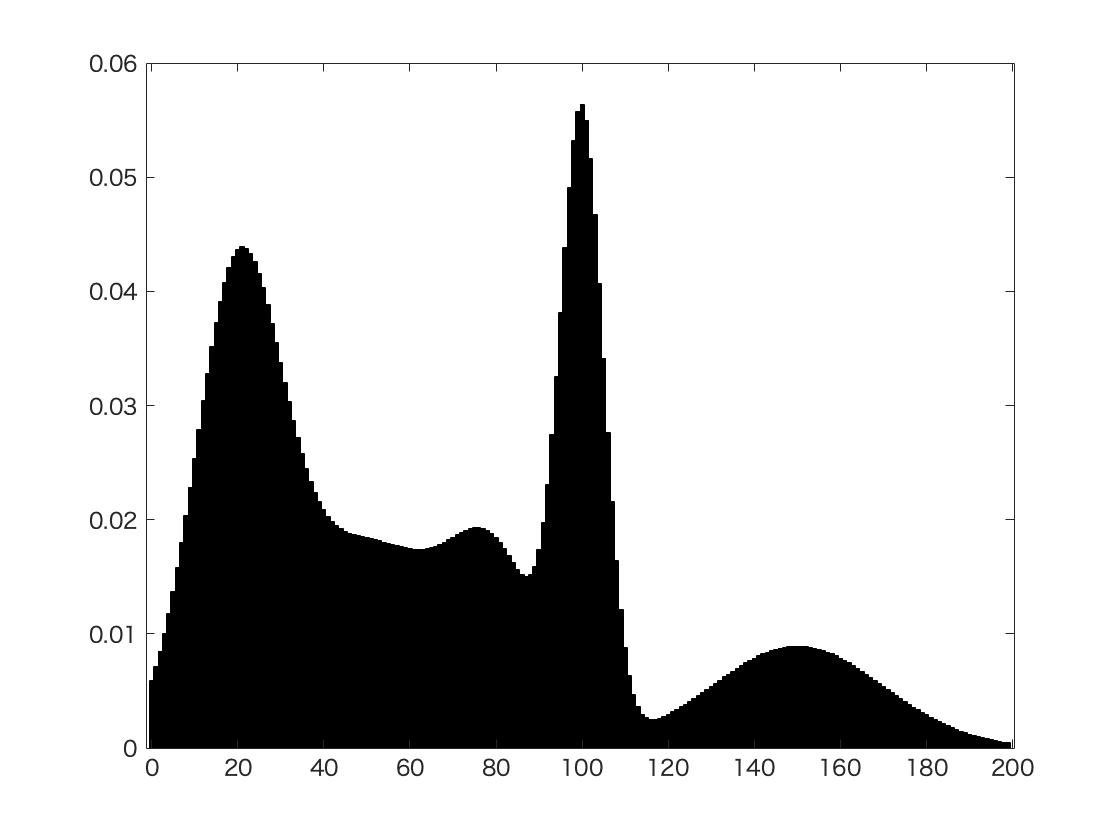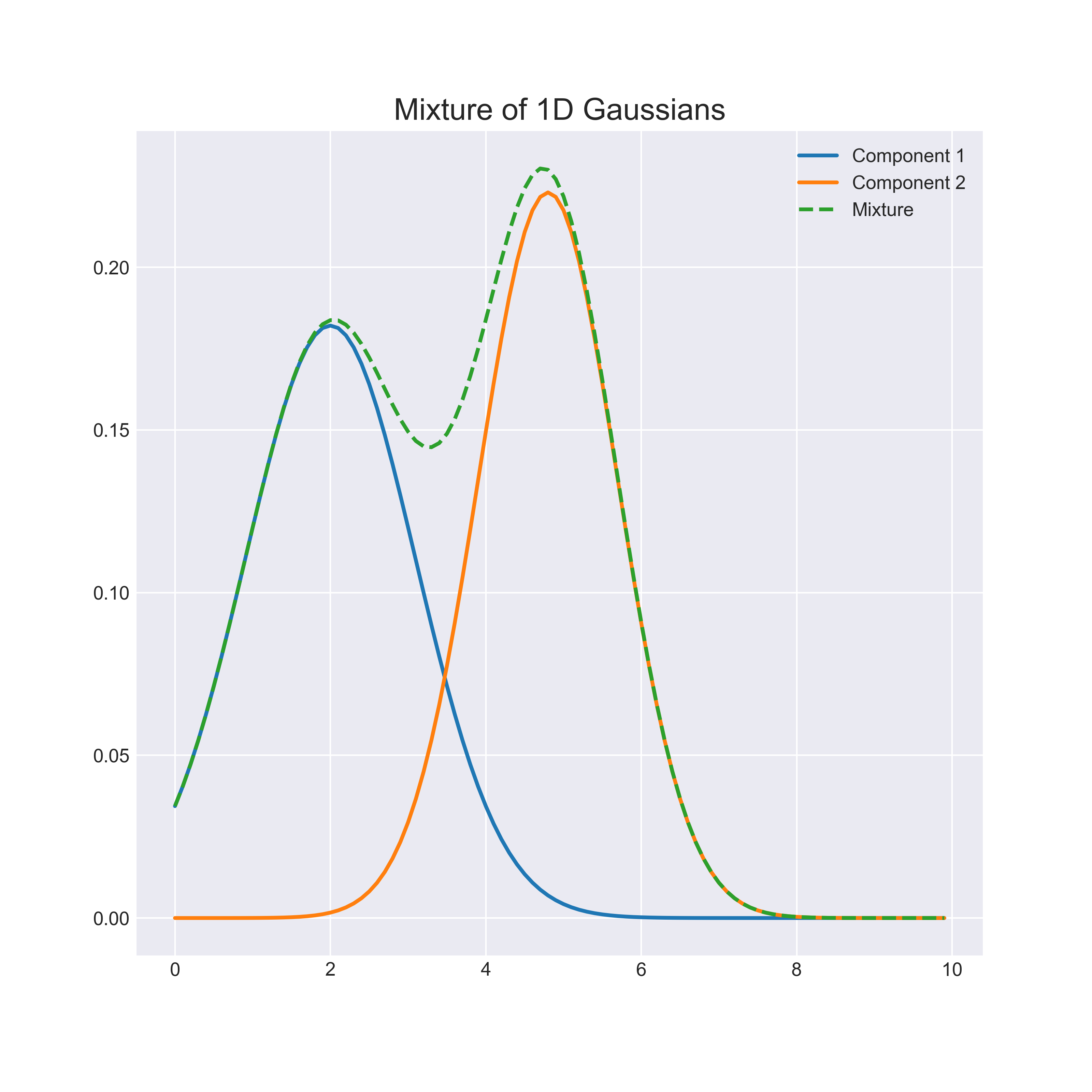Mixture Models
Contents
Mixture Models¶
Data is assumed to come from one of many distributions
*\(D_{1}\)(x), \(D_{2}\)(x) …\(D_{k}\)(x) - the k difference distributions *Each data point is picked from one of these
Motivation:¶
Formalizing the data generative model and coming up with principled soft/hard clustering algorithms
#General Mixture Model
Model can be “hard” (each point from single cluster), or “soft” (each point belongs to multiple clusters)
Appropriateness depends on context
Captures difference between hard and soft clustering
Prominent examples
Gaussian mixture
Topic models for documents
Applications for mixture models¶
Formalization of clustering - allows us to view clustering as a real parameter estimation problem, and thereby derive the clustering definition
Often, even when data is not cleanly clusterable, can fit a mixture to estimate different parameters of subgroups
Example 1 - house price modelling¶
Data - prices of N houses
House price depends on various factors
Generative model
Price = function(neighborhood, area, design)+noise
Example 2 - topics in a document¶
Data = set of documents
document = bag of words
Topic = a probability distribution over vocabulary
Generative model
Choose a topic at random
Choose words for that topic
Example 3 - handwriting recognition¶
Data = 64 x 64 images, each of one handwritten digit
Generative model = pixel intensities from ideal digit + noise
Each mixture component =
(fix an “ideal” way of writing a digit) + noise
\( D_{1}(x) = μ_{1} + noise \) intensities that come from “ideal 9” query handwritten digit

Fig. 30 Here is my figure caption!¶
#Gaussian Mixture Model
Each data point is generated first by choosing the particular Gaussian and then generating a sample from it
Note
Given the points, can we learn all the parameters, including the correct label of every point?
D_{i}(x) = N(μ_{i}, σ^2_{i}), i = 1,2,…..,

Fig. 31 An example of Gaussian Mixture in image segmentation with grey histogram¶
Each data point is generated in the following manner:
Toss a k-faced dice, where probability of i^th face = \(W_{i}\)
If face j appears, then generate a point by sampling from \( D_{i}(x) = N(μ_{i},σ^2_{i}) \)

Fig. 32 This is an example of guassian mixture model with 2 componenets¶
Given the points only can we learn all the parameters, including the correct label of every point
Combined pdf = \( \Sigma _{i≤n} w_{i}N(μ_{i},σ^2_{i}) \)

Fig. 33 Here is my figure caption!¶
Note
Bayesian Gaussian mixture model using plate notation.

Fig. 34 Here is my figure caption!¶
Observation¶
For the Gaussian mixture model, the pdf is \( \Sigma _{i≤n} w_{i}N(μ_{i},σ^2_{i}) \)
Is this the same as pdf to \( w_{1}Z_{1} + ... w_{k}Z_{k}, where \) \( Z_{i}~N(μ_{i},σ^2_{i})? \)
#Bit of history!
Originally proposed in 1894, Karl Pearson, to classify crab population
Proposed a “method of moments”, required solving a 9th degree polynomial to find the roots!
Subsequent research yielded more efficient algorithm, under certain assumptions
